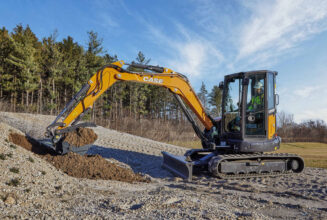Dealing with difficult customers among other common issues
By Bob Clements
Seldom does a day go by that I don’t receive a question from dealers who have either read my articles or attended my workshops. They range from issues dealing with employees, finance, floor plans, manufacturers, distributors and customers. During my next few articles, I thought it might be beneficial to group some of the questions together into categories and share my thoughts on how I would handle or deal with them if they came up in one of the dealerships with which I work.
Customer issues
Customer problems are an issue for all dealerships and are a recurring theme in questions that are asked by dealers. I think we would all agree that customers are an important part of the business, but I find in most cases that dealerships bend over way too far to help some customers who simply need to be fired.
You all have them — those customers who regardless of what you try to do, are never satisfied, but continue to come back (probably because other dealers have already fired them). As an owner, it’s important to understand that not everyone who walks in your door is someone you want as a customer. As a matter of fact, 10 to 15 percent of your current customers create the bulk of the headaches in your dealership.
It may be difficult to think about getting rid of customers you have invested time and money on trying to attract to your business, but when a customer is costing you money or driving your employees insane, it can be a smart move.
Of course, you don’t want to let a profitable customer go if losing that revenue could sink you. And no one is advocating firing customers just because they are demanding or you simply don’t like them. It’s a good idea to assess each of your customers — how much you are bringing in from them and how much are they really costing your dealership.
If you have customers who aren’t making the cut, then the next time they come in, as an owner, you should have an unemotional conversation with them, present them with some options on how the relationship between you and them can be improved, and let them make the decision if they want to continue to work with you or not. Keep in mind, sometimes these conversations can get a little ugly, but it’s better to go through the pain of dealing with them one time than the pain and cost to your dealership and your employees of having to deal with them every time they walk through your door.
Posted labor rates
Setting the labor rate for your service work is one of the most important things you, as an owner, can do for the sustained profitability of your service department. The big question is: How do you go about determining what the rate should be?
Over the years, I have seen several formulas that other consultants use to determine the “right rate” based upon costs. However, for the most part, I have found that dealers, who have used the formula, shortchange themselves by not charging as much as they should or could.
The first question I ask my dealers when we look at their posted labor rate is: What are the car dealers in their area charging to do work? I use car dealers as a baseline because that is where your customers’ perception of what a “fair rate” would be. Now, most customers won’t feel that OPE dealers should charge what car dealers charge, which I am OK with, but there is no reason you as a dealer can’t be somewhere within their range.
The other factor I look at regarding the labor rate is the recovery rate for labor on warranty claims. If your dealership is falling short of making money doing warranty work, then you need to move your posted labor rate up to offset the shortage. Think about it this way: If my posted labor rate is $65 per hour, and I find that in doing warranty work I am only recovering 90 percent of my billable time, I am going to increase my posted labor rate by 20 percent to $78.
I try hard not to just break even on anything. Keep in mind that you have no control over what a manufacturer sets for warranty times on repairs, but you do have the ability to set your rate to a level that will let you be profitable while doing their work. The $78 will be charged to manufacturers for warranty repairs and to customers who want to use your service department, but who didn’t buy their equipment from you. You could then do a 20-percent discount to your preferred customers (those who have purchased equipment from you) and use that 20-percent difference as a selling tool when someone is price shopping you on your wholegoods.
Service techs
Most of the work my company does in dealerships has to do with the service department. As a result, I receive a lot of questions regarding service techs and the issues dealerships face in finding, hiring, and motivating them to perform at a profitable level. I find that in many dealerships the shop is the mysterious thing that is left to run on its own with little oversight or expectation from the ownership. If you have attended any of my workshops or read any of my articles during the past several years, you know that I demand a lot out of a shop. To make the service department produce, you have to know what is reasonable to expect and then manage to those numbers.
As I work with dealers, we focus on managing a service department’s inventory, which is time. We know how many hours (clock time) we pay every day per technician and know that we need to sell at least 85 percent of that time to be profitable. I also know that by using flat-rate pricing, I can actually sell more time (billable time) than I actually have — which is pretty cool. I also have other time (non-billable time) that is my thief, which I monitor with a religious-like fervor to make sure there is little, if any, that gets away from me.
My goal is to have every minute of every day billed to someone either internally or externally. The best way to get a handle on your time is to have your technicians, for one week, track their non-billable time on a sheet of paper. When a tech is pulled away from a bay or bench to do work that can’t be billed to a customer (e.g. unload a truck, help demo a piece of equipment), the dealership’s owner should evaluate each of those occasions and determine if an employee other than a tech could have done the work.
Most techs are blamed for the lack of production, yet when I am in dealerships and working with their service departments, I seldom find the tech at fault for the lack of efficiency. In many shops, it is the techs that are interrupted to do work that could be done by other less-experienced, less-qualified, lower wage-earning employees.
It’s important to hold your techs accountable to be at least 85-percent efficient, but that can only happen if your parts department is doing its job and you keep the techs on the bench turning wrenches.
Hopefully, I have answered some questions that are relevant to your dealerships either now or at some point in the future. If you have a question that you would like for me to address, please feel free to post it on my Facebook page or e-mail it to me at bob@bobclements.com and I will write or call you with a response.
Bob Clements is the president of Bob Clements International, Inc., a consulting firm that specializes in the development of high-performance dealerships. His organization works hands on with dealerships throughout North America, helping them attain the personal freedom and financial wealth all owners strive to achieve. For more information, contact Bob Clements at (800) 480-0737 or bob@bobclements.com or visit his website at www.bobclements.com.




